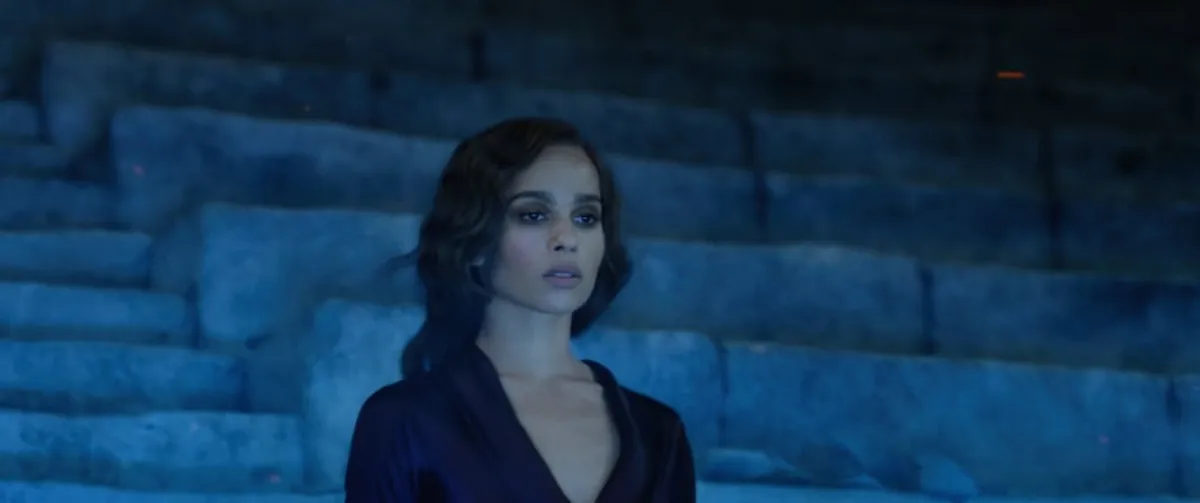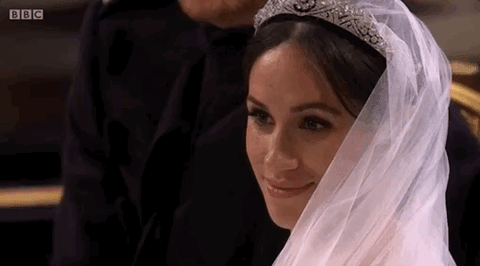Leta Lestrange Is a Massive Disappointment in The Crimes of Grindelwald


Last night, I was brought to see Fantastic Beasts: The Crimes of Storytelling, and overall, I found it to be a dull film with a lot of setup and stories that seemed loosely connected.
Things would be established through dialogue, but mostly we, as an audience, were supposed to fill in a lot of blanks and accept a lot of “oh, yeah, that didn’t stick” from the last movie. It’s a truly meaningless adventure, but it does introduce something new for the Harry Potter universe: the first named and onscreen black female Slytherin character, and the first Harry Potter movie to highlight non-white Purebloods.
So how did that turn out?

***MAJOR SPOILERS FOR FANTASTIC BEASTS 2.***
I feel I should start out by saying that, of all the elements in this movie, it was Leta Lestrange I’d been looking forward to most. A black female Slytherin who’s the middle of a semi-love triangle between two meh white dudes? Dope, and I love Zoë Kravitz. So before anyone starts with “you came into this mad,” I wanted this to work.
In the movie, Leta is a half-black, half-white witch who is engaged to Theseus Scamander (a character who is called a bully but doesn’t bully anyone in the movie) and a childhood friend of Newt. Through flashbacks, we see that she was tormented by other kids because of being a Lestrange and became a troublemaker in response. She even feels like Dumbledore didn’t like her.
We also find out that the death of her brother has caused a lot of issues with people saying that Credence is her brother. (He’s not. He’s a secret Dumbledore because J.K.) She reveals via flashback that, as a young girl, during a boat ride to America, her brother wouldn’t stop crying, and she switched the baby with another one (instead of using magic, like a witch, but okay).
When the boat sank, one of the escape boats capsized, and her half-brother drowned. The baby saved was Credence, and the baby who died was her brother. This is why she is seen in the trailer saying to Newt that “there’s never been a monster you couldn’t love.” Is any of this interesting? Nope.
Oh yes, and she dies at the end because she tries to kill Grindelwald by pretending to join him, but is burned alive by fire. Her last words? “I love you,” said to … is it Newt? Is it Theseus? IS IT BOTH? (No one really cares.)
All of this would have been a weird, uneventful storyline that would already have upset me simply because, for a movie that has four speaking roles for women of color, all of them are terrible, and one of them dies to save her white boy love interests and “atone,” I guess? That’s all basic enough on its own, but what makes this all come together in deep frustration is the story of Leta’s birth.
There’s a wizard named Yusuf in the movie who is also trying to find the MacGuffin that is Credence think that he’s a secret baby Lestrange because he wants revenge on the Lestrange family for what they did to his family (it’s very Dynasty). Yusuf explains that his family was a pureblood Senegalese family, the Kamas (and they emphasize that Senegalese part), who were living in London.
His mother, Laurena was abducted by Corvus Lestrange, forced to become his wife, and subsequently raped. She stayed under Corvus Lestrange’s control until she died giving birth to Leta, who grew up unloved by Corvus and unaccepted by multiple worlds, as Grindelwald says to her.
It is at this point that I turned to my movie buddy and said, “Did they make Leta a ‘tragic mulatto’?”
For those unfamiliar with this term and its use in fiction, the tragic mulatto is a stereotypical fictional character trope that came from American literature during the 19th and 20th centuries, beginning around the 1840s. The “tragic mulatto” is an archetypical mixed-race person (a “mulatto”), who is sad and isolated in the world because they fail to completely fit in the “white world” or the “black world.” The trope goes that there’s no place in the world for them because they can never truly be understood by society.
Most commonly, these characters come about from the “relationship” between a white master and a black female slave. In watching the scene where Leta’s mother is taken, she is wearing a white dress and is this beautiful dark-skinned woman being stolen by Corvus Lestrange, while her black husband is seemingly helpless to do anything despite also being a wizard, rich, and a pureblood.
This event is the first example of real-world racism implied between black and white witches, and for it to be brought into the Harry Potter universe in this way is … gross. It’s gross because it feels like this is their way of explaining why she’s a black member of this pureblood family and why there are not many other mixed-race Lestranges.
Not that there could be other black purebloods, or that, in a society where purebloods are ceasing to exist, it makes sense that pureblood wizards across the world would intermarry. No, to explain her existence, she must be a product of rape and named after one of mythology’s most well-known rape victims: Leda.
For me, it comes down to the question of “why?” Why did J.K. Rowling invoke this deeply problematic trope in the creation of the character?
While I’d love to explain it away that “she’s British,” the reality is that stories about “tragic mulattos” flourished in Britain as well, and the movie Belle, which highlighted the story of Dido Elizabeth Belle, came out just a few years ago. A writer of Rowling’s influence should know what she’s talking about when putting pen to paper, and everything about this movie shows a real lack of insight into the progressive politics she wants to highlight.
Also, there are black/mixed-raced British people and one of them, while American born, is currently the Duchess of Sussex.

(image: BBC)
A quote by director David Yates, from PopSugar, has him saying the following about Rowling’s writing for this movie:
“If you’re making a movie, ultimately you can’t help but be sensitive to the world in which you create it,” Yates said of the filming process. “It influences you every single day, influenced Jo when she was writing the script, influences us as we put the whole story together . . . but the themes, I think, are kind of universal and archetypal and timeless. Rather than a direct political sort of counterpoint or context, it’s really about the values of tolerance and understanding and a celebration of diversity.”
What diversity is being celebrated?
You have a bunch of black pureblood wizards being overpowered, abused, and kidnapped by white wizards that should be their equals. Nagini does truly nothing, in her small amount of screen time, to justice her existence as anything more than a shoutout. Leta lives a sad, tragic life hated by most people on both sides because of her family and her dead brother, only to be sadly killed trying to pull a Loki vs. Thanos.
And the other POC character gets to speak and go. Fantastic diversity. Even Leta’s storyline could have been meaningful if it wasn’t 90% exposition.
The Crimes of Grindelwald is the kind of story that should be interesting, but just reeks of a lack of understanding. The way Queenie goes from being cute, but charming to a rapist and a fascist to be with the man she loves (a non-magical man who Grindelwald would absolutely kill, but whatever) comes so fast it’s truly astounding.
To have Grindelwald’s explanation for why they need to take out muggles now come from him predicting WWII, with Holocaust imagery at the end, is really jarring when we’ve spent how long establishing Grindelwald as a Nazi/Hitler figure? Seeing him now say he’s inspired to eliminate non magical people, because of Hitler, is like … Joanne, you know Grindelwald is gay, right?
I’ve seen people comment on my last post about the Harry Potter series’ dealings with race that I have read too much into it, because these things aren’t supposed to hold up to this level of thinking, because that story isn’t what Rowling is trying to tell. Well, that’s the story she wants to tell here. She wants to be political, she wants her series held up as one of diversity, inclusion, and progressivism. Well, you have to walk it like you talk it.
Leta’s fate hurts, not just because of the sloppy writing around race, but because I was so close to getting what I was looking forward to—a beautiful, elegant, black Slytherin anti-hero—and what I got is a tragic mulatto backstory not even fully given its due, and a death that is deeply unsatisfying.
But, you know … three more movies.
(image: Warner Bros)
Want more stories like this? Become a subscriber and support the site!
—The Mary Sue has a strict comment policy that forbids, but is not limited to, personal insults toward anyone, hate speech, and trolling.—
Have a tip we should know? [email protected]
